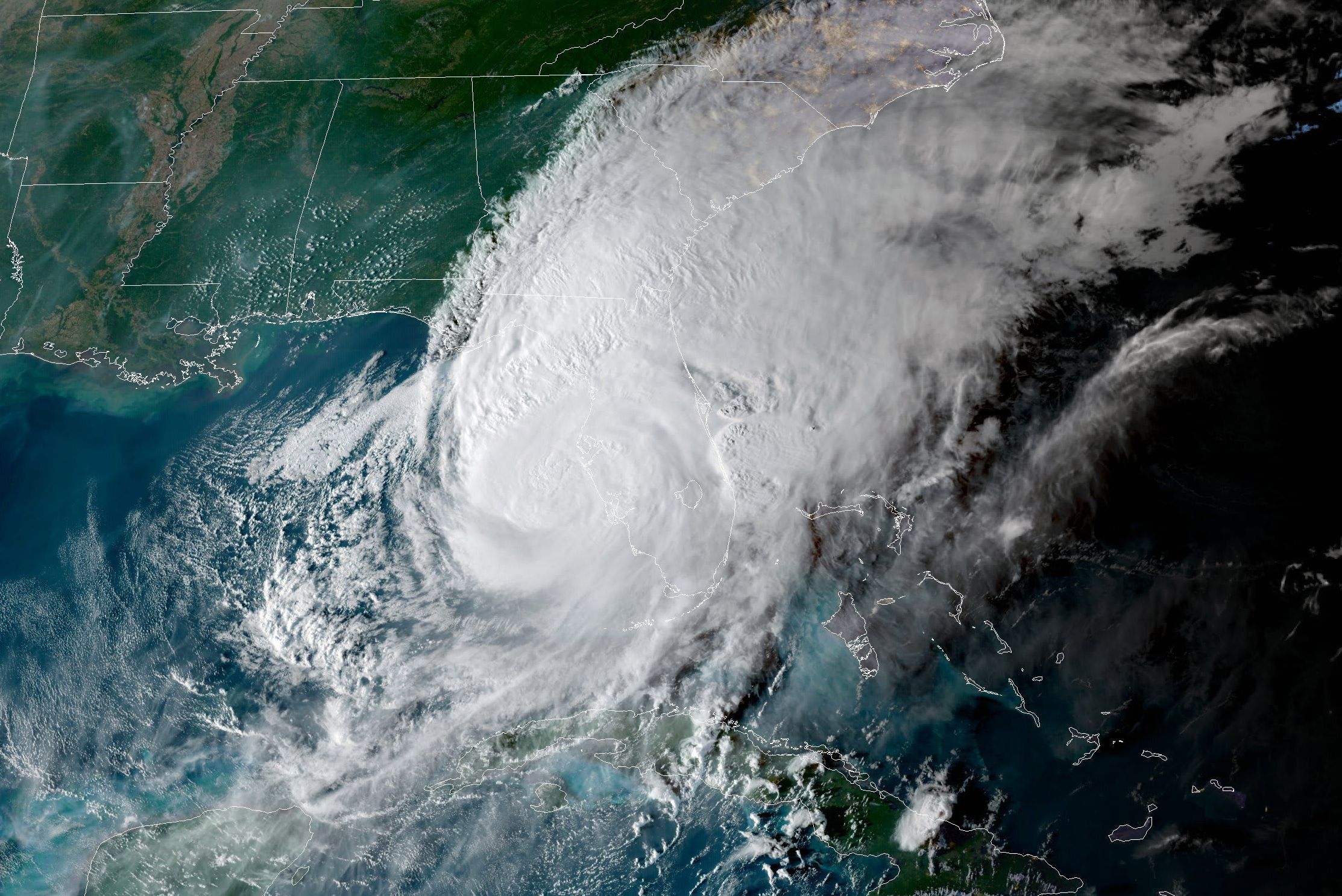Florida Is the Lightning Capital of the U.S. Here's How to Stay Safe During a Storm.

Lightning strikes in Sarasota Bay.
Image: Damon Powers
My dog turns into a shivering coward whenever a thunderstorm rolls in. When a big bolt cracks, I assure him that he is fine and he doesn’t need to worry since we are safe and sound inside our home. But maybe he knows something that I don’t. It turns out that even if you are inside your home, you can get struck by lightning.
Florida is the lightning capital of the United States. While it’s nice to brag about being No. 1, this also means that Florida leads the country in lightning deaths, and as our atmosphere heats up and fills with more vapor, it will increase convection and create more thunderstorms. The danger isn’t because of some karmic retribution upon the residents of this state—it’s due to the density of our large population, our tropical weather and our outdoor culture. June, July and August are the peak months for thunderstorms, and while you’re more likely to be killed by a wasp sting, there are measures you can take to avoid being electrified.
It should come as no surprise that being outside puts you much more at risk during a thunderstorm. There’s a myth that golfers are the most frequent victims of lightning, but you are more likely to get struck when fishing. Between 2006 and 2019, four times as many fishers as golfers were killed by lightning.
There are a handful of ways to be struck. The deadliest type is the direct hit. This is when a person is struck dead on by a lightning bolt and becomes a part of the main lightning discharge channel. While this is the most fatal type of strike, it is also the least likely to occur, making up just 5 percent of lightning-related incidents.
The most common kind of lightning casualties, actually, are ground strikes, which make up more than half of all lightning injuries. This is when lightning strikes an object, like a tree, and the current travels along the ground, electrocuting any living thing in its path until it dissipates. Because it travels farther from the original site of impact, resulting injuries are less severe.
While metal objects do not attract lightning, they can provide a path for lightning to follow because of its conductibility. Most indoor lightning casualties are a result
of metal conduction—metal plumbing, electric outlets and certain windows
and doors can bring lightning inside the house and shock people indoors. Another way to be struck by lightning is a side flash. This happens when a bolt strikes a taller object and part of the current jumps to someone nearby. This generally occurs when someone is within a few feet of a struck object—often a person who is seeking shelter from rain under a tree.

Lightning strikes the beach in Venice.
Image: Damon Powers
So what should you do if you are outside and get caught in a thunderstorm and can’t find shelter?
It’s common knowledge that you shouldn’t stand under a tree, but according to the Centers for Disease Control and Prevention, you should also avoid bodies of water like ponds, lakes and the ocean. If you are out on the water, head to shore as quickly as possible and stay away from any objects that can conduct electricity—power lines, steel fences or any metal object.
Open-air structures will not save you, either. People under porches, gazebos and golf carts can still get hit. You should also try to avoid elevated areas, since lightning is more likely to strike the tallest object nearby.
The best way to reduce the chance of getting struck if you are stuck outside is to crouch in a ball, tuck your head and put your hands over your ears. Do not lie flat on the ground. The less amount of your body that is in contact with the ground, the better.

Bolts in downtown Sarasota.
Image: Damon Powers
Surprisingly, being indoors doesn’t necessarily protect you from the threat of lightning, either. One third of all lightning deaths occur inside. To stay safe
indoors, close all your windows and do not touch water. That means do not shower, take a bath or wash dishes if you hear thunder, since lightning can travel through plumbing.
You should also avoid using any electronic equipment connected to an outlet. Turn off the TV, shut down your computer and don’t open the fridge for a snack during an electrical storm. Also, don’t use corded phones, but who has one of those anymore, anyway?
What happens if you do get struck by lightning?
A single lightning strike can generate more than 10 million volts of electricity. The maximum voltage from a stun gun is 30,000 volts, so getting struck by lightning is the equivalent of being shocked simultaneously by more than 333 cops. A lightning bolt’s peak temperature is 30,000 degrees on the Kelvin scale, which is five times hotter than the surface of the sun. Fortunately, lightning strikes last between just 0.01 and 0.1 seconds.
Most lightning victim deaths happen when the current travels through the cardiovascular system and stops the heart. The good news is that 90 percent of people struck by lightning survive. The bad news is that most survivors deal with
varying degrees of health issues for the rest of their lives. Lightning strikes can
cause rhabdomyolysis, a degenerative muscle disease that causes kidney damage.
You can even go blind or develop cataracts, and your eardrums can be ruptured. And because lightning is so hot, it can boil the sweat on your skin and cause significant burns or even melt the clothes on your back. Most strikes also cause a temporary paralysis of the limbs called keraunoparalysis. This can last for a few hours.
You’re much more likely to die if you’re a man—79 percent of lightning fatalities are males. This isn’t because lightning is drawn to Y chromosomes. The National Lightning Safety Council wrote in a 2022 report that men are more frequent victims of lightning because men “are unwilling to be inconvenienced by the threat of lightning, are in situations that make it difficult to get to a safe place in a timely manner, don't react quickly to the lightning threat, or any combination of these explanations.”
Despite the potential risks of lightning, you don’t have to turn into a quivering Labrador whenever the inevitable thunderstorm rolls in. The odds of being
struck by lightning are less than one in a million. But considering the hundreds of
thousands of people moving to Florida each year, we can expect to remain the
lightning death capital of the United States long into the future.



